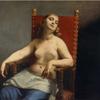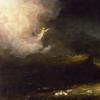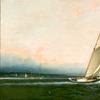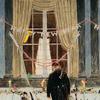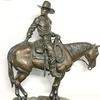Featured 19th Century Painter: William Preston Phelps (American 1843 – 1923)
- April 05, 2021 09:09
William Preston Phelps, the "Painter of Monadnock", was born on the family homestead in Chesham, New Hampshire, which is situated at the foot of Mt. Monadnock. This idyllic setting fundamentally connected Phelps to beauty of America’s vast landscapes. Young Phelps was constantly drawing in his spare moments from the labors of farming. His father, who also painted houses for extra income, cognizant of the potential of additional income his son could bring the family, apprenticed his young son to a Lowell, Massachusetts sign painter. Not unsurprisingly, instead of returning to Chesham, the enterprising young man, not only married the boss’s daughter, but set up his own sign painting business in Lowell. Artist William Phelps began formal art training by commuting to Boston in the evenings for art lessons. His first paintings, which were landscapes, were displayed in the window of his shop. As demand for his paintings increased, he devoted more of his time to this pursuit. After an exhibit of his paintings in Lowell, some of the prominent townsmen financed a trip to Europe for him to study painting. In 1875, 19th century artist William Preston Phelps left his young family and traveled to Munich, Germany, but returned within two years. In 1878, while back in Massachusetts, he exhibited his works at National Academy of Design (Boston) where he firmly cemented his reputation as an artist. However, the lure of the rich artistic life of Munich took him back to Germany later in 1878, this time with family in tow. Phelps made painting excursions along the Dussel and Rhine rivers and later moved to Paris, France, from where he made trips to England, Scotland and Wales. Upon his return to Boston in 1882 he joined the Boston art circle and opened a studio on Tremont Street. Later moves took him first to Lowell, and then to the family homestead after the death of his father in 1890. Chesham remained his home base until his death in 1923. It was in Chesham that he fully developed his plein air technique. Phelps painted outdoors all year round and built a horse-drawn mobile shelter that he used for protection from the elements while he painted. Years earlier, he had used such a shelter while painting his well-known depiction of the Grand Canyon (now lost) during a trip out west in 1886.











_-Closing-the-Distance_100x100_c.jpg)

